Next week, I will be joining Constance Penley and Shoshanna at Escapade, a long-running Southern California slash convention, for a discussion of fandom and academia. The event marks the 17th anniversary of a public conversation the three of us, along with Meg G. had held at the same convention shortly after my book, Textual Poachers: Television Fans and Participatory Culture was published. As we have been preparing for this reunion (I'm bummed that Meg is not going to be able to join us), Shoshanna pulled out of some long forgotten trunk the hard copy transcript of that original conversation, which was circulating in fandom for some years, but which has never been published. The conversation represents an interesting snap shot to how the slash fan world was responding to the growing academic attention being pointed in their direction.
The early 1990s had been a bumper period for fan studies since it also saw the publication of some of Penley's ground-breaking essays on slash and of Camille Bacon-Smith's Enterprising Women: Television Fandom and the Creation of Popular Myth. Some have described this moment as the birth of fan studies, though as this discussion makes clear there was a long history of academic writing about fandom and about slash before our work was published. Yet, it is fair to say that our three projects exerted a very strong influence on subsequent academic research on this topic and helped to pave the way for Aca-Fen who have followed us.
This transcript captures the raucous, free-floating character of that original conversation and helps us to situate this moment of fan research in a larger historical context. I've been thinking a lot about this as I have been teaching my USC seminar on fan culture. In many ways, these books emerged at a key crossroads in American cultural politics -- on the one hand, they came just as the Third Wave of American feminism was starting to emerge, defining itself as much around its cultural preferences as around specific policy differences with the previous generation. In some ways, Bacon-Smith's focus in her book still reflects the Second Wave rhetoric and agenda, no doubt also a product of the fan women with whom she did much of her research, while Penley and I, in different ways, were grasping towards the concepts about gender and sexual politics which would be further articulated in the coming years.
At the same time, there are passing jokes here which remind us that the early Clinton years were a period of increased visibility for issues of sexual identity in American society: while the first generation of slash scholarship had wondered why straight women would read stories about gay men, there are many fans here who are out of the closset and eager to complicate such a framing of the issue. Shoshana, along with Cynthia Jenkins, was my collaborator on "Normal Female Interest in Men Bonking," which was one fo the first academic essays to acknowledge the strong presence of queers in slash fandom.
And we can see here that fandom itself is still defining its language and practices -- note the use here of "songtapes" throughout rather than the term, "vids," which is apt to be how we would describe these fan-made music videos today.
Next week, I am going to share a second transcript from the archives of the history of fan research -- this one a panel at Gaylaxicon which dealt more directly with issues of sexuality and fandom. If you enjoy these transcripts, please thank Shoshanna for her hard work compiling them and seeking permission from the fans quoted to share them with you. You will note some fans choose to remain nameless (or remained so because we were no longer able to identify them or reach them for permission). We have respected, as far as we know, fan's own choices about how to be identified in this transcript.
Transcript of a panel discussion between Henry Jenkins, Constance Penley, Meg G, Shoshanna, and others, at Escapade III, 6 February 1993.
Escapade is an annual slash convention. At that time Henry had published Textual Poachers: Television Fans and Participatory Culture, Routledge, 1992. Constance had published, among other things, "Brownian Motion: Women, Tactics, and Technology," in Penley and Ross, eds., Technoculture; and "Feminism, Psychoanalysis, and the Study of Popular Culture," in Grossberg, Nelson, and Treichler, eds., Cultural studies, Routledge, 1992. Meg and Shoshanna were fans. Many other speakers could not be identified on tape, and are listed as "?". All fans identified here are identified with the name/pseud they requested.
Shoshanna: This is the panel on academia and fandom, the way academia looks at fandom and the way we look back.
Meg: You have to first of all give the two alternative titles that we came up with for this panel.
Shoshanna: Oh, yeah. My alternative title that, for some reason, they would not accept, was The ivory tower meets the collapsible jade pagoda [Laughter]. They wouldn't accept that.
Constance: Inflatable jade pagoda.
Shoshanna: I thought it was "collapsible," but then, I don't like K/S. What was the other one? If not Acamedia...
Meg: Oh, when we talked about fans among the academics, you know, wandering lonely in this alien land... [Laughter]
Shoshana: Um, if there's anyone at this con who hasn't noticed me yet--because I'm fairly pushy--I'm Shoshanna, I'm just a fan. [Laughter] Well, I'm not just a fan. This is Constance Penley, who has written several articles on fandom and the community and intellectual-type stuff; I really meant to reread them the week before I came [to the con], but I moved the week before I came, and that took priority, so I can't say a lot specific about your work, but you will in a minute.
Constance: Yep.
Shoshanna: This is Henry Jenkins, who just wrote a book called Textual poachers, a study of fandom, particularly focussing on slash, on filk, on songtapes, on community, on reading strategies. Both these people are also fans; they're not just academics who come in and go, "Oh, look at the weird ones!"
Meg: Insiders and outsiders at the same time.
Shoshanna: Yeah. Bicultural, sort of. [Laughter] Well, they are two different cultures. They really are. I mean, I straddle the line too. I'm a fan and an academic... This panel [in the program book] listed "Jenkins, Penley, et al." [Pointing to Henry, to Constance, to herself, and to Meg,] Jenkins, Penley, "et," and "al."
Meg: You can call me Al. [Laughter]
?: But where's Sam?
Shoshana: He's leapt into, um...Henry? [Laughter; Henry says, "Oh, boy..."] Can you imagine Sam's face if he leapt into this art show? [Laughter] Can you imagine Al's face if Sam leapt into this art show? Meg, what do you want to say about yourself?
Meg: Well, let's see. I guess I can say that I sort of straddle the line because I'm an academic librarian in my mundane, day-to-day life. I have had an interest for quite some time in how academics view fandom, and once academics started viewing slash fandom I got even more interested in it. I wouldn't say that I'm really an academic, in that the only Master's I have is a library one, and not a real one, as anyone else in these other fields would tell you, so I don't count that way. I did however do some librarian-like things for this panel which include this. I run into some people still who say, well, slash should be private, and shouldn't be studied, and I wanted to make the point with this that it's too late. [Holds up a binder.] This is the bibliography, this is the academic and public media things discussing slash. Not fandom, slash. [Oohs and ahs; a cry of "where?"] This is a bibliography of all of that stuff, everything that I've found.
Shoshanna: [responding to an audience question on the side] It's almost certainly not complete.
Henry: It's not; I've got stuff that isn't on her list.
Meg: Anybody that has anything I don't have, send it to me so I can keep expanding it. If there's anything on here you want to look at, hit me up to look at the notebook; the chapters from the books [i.e. Henry's and Camille Bacon-Smith's books on fandom] are in here but you should buy the full books if you're interested in them. So this sort of validates the reality of the topic of the panel, in that it's too late, and it's been too late for years now; they found us. We have met the enemy and he is us.
Constance: I was happy that Jennifer and Christine [the convention chairs] wanted to put this panel together, because it made me go back and think about how I got into this. And I realized that one of the things I can say about my interest in slash fandom--I know Henry's going to talk a bit about how he was a fan before he was an academic, but I wasn't. And I came to slash fandom when I first started seeing stuff and started ordering it, and more of it, and more of it [Laughter] and for me it was the best--call it pornography, call it erotic writing, whatever--I had ever responded to, you know? I just thought it was great. But then just the idea that all of these women were getting together to--I do feminist film theory and television studies. And a lot of what I do is dealing with people who have these ideas about women consumers of mass culture.
?: Yes, but are they accurate ideas?
Constance: No, they are not; no, they are not.
Meg: There's something to do with passivity...
Constance: Yes, there's something about... You know, consumers are supposed to be bad enough, but you know, the most passive, degraded consumers are supposed to be women consumers of mass culture. So much of this just seemed wrong to me in every way. And interestingly, even some of the women, some of the feminists who are writing about women in mass culture who are quite sympathetic, still came up with what I thought were really very reductive descriptions of what went on when women were dealing with mass culture. So I got an invitation to IdiCon IV; I guess I'd just been ordering so much stuff that you know, somehow... And I went to that, and one of the things I realized was that I'm a fan of slash fandom. [Laughter] That's what my fan activity is. I mean, of course I--you know, to read K/S I went back and completely made myself over as a Star Trek fan, because I couldn't understand any of it, unless I understood the show.
Shoshanna: Are you a fan of slash, or a fan of slash fandom?
Constance: I'm a fan of--well, both! But if I really have to say where my biggest fannishness is, it's slash fandom. The idea of it and the actuality of it. So in terms of how that intersected with my interests or how that influenced me, at this point it's so difficult to say. But I do know that the three areas that I've been working in are so congruent with what goes on in slash fandom. I've been very interested in popular science or technoculture, so I wrote this one piece on how slash fans make decisions about technology in everyday life in the fan culture. So it was about making songtapes, and about fans and VCRs, and then the last half of this piece was on fantasies of technology in the stories themselves. I'm just interested in various parts of American culture where Americans are thinking through the human relation to technology, and how that might be a democratic relation to technology, with equal access to all. So this was like a perfect example, to be able to talk about this in a very positive way. So just to shamelessly hustle my own publication, that chapter is in this book that I co-edited called Technoculture, and it's all original essays that we got people to write, about hackers, AIDS activists, radical office workers, slash fans, in other words all these people out there who are just, shall we say, appropriating high technology and mass media in ways that they were not supposed to be able to do. So that was the context [of her piece]; I wanted to put that in. The other areas of work that I do have been kind of responsible for helping to start the notorious field of masculinity studies in academia [Laughter], and just this week a book that I edited called Male Trouble came out. And Henry is in that. And all those essays deal with new configurations of masculinity that are found, you know, all over American film and television right now. Fraught versions of it, slashed versions of it--even when they don't know they're slashed [Laughter]--
Shoshanna: Lethal Weapon 3.
Constance: --utopian versions of masculinity. So that was an interest I already had, but certainly what was going on in slash fandom, with the attempt to try to come up with better versions of masculinity--I learned a lot from that. And then the third area I've been interested in is pornography. I just always felt that as a feminist, I was just so sick of the pornography debates, so sick of the Women Against Pornography movement, I was so sick of everybody assuming that every feminist was anti-pornography. And I also saw this as a major obstacle to feminism becoming more accepted and more popular in this country, largely because of the way the media have taken this up; so many people think that all feminists are anti-pornography, and of course anti-sex, and anti-men, and everything else. So anyway, I decided that I really had to go ahead and confront this head-on. So I'm now doing, as far as I know, about the only course in this country--I teach at U. C. Santa Barbara, and I'm doing a course on hard-core pornographic film. And if you read the Santa Barbara News Press tomorrow morning [Laughter] you can see a little comment on my course. The Santa Barbara County Citizens Against Pornography lodged a protest with my chancellor, so... This is, you know, kind of historical pornography, stag films, things like that, going all the way back to the teens and twenties; it's right on up to the big high-production-value films of the seventies: Deep Throat, Inside Misty Beethoven, Behind the Green Door, and right up through lesbian sex videos, gay male hardcore; I'm showing a bunch of the safer-sex shorts from Gay Men's Health Crisis in New York, where you've got these really hot vignettes that are meant to demonstrate safer-sex techniques that are still really hot. And I introduce my students to the slash idea in this course, because the emphasis of the course is on people knowing what pornography actually is, rather than what they're told it is, and also on how pornography figures into people's lives. Because one of the things that I've really learned from slash fandom is that so few people have any description or any idea of what pornography means for people, what it can mean for people, what just being able to write your sexual ideas and desires can mean, for a sense of personal liberation, but other kinds of liberation as well. So by this time, I mean, to sum it up, my academic ideas are my fannish ideas, and my involvement is slash fandom is--they're just so tied up together it's impossible to tell. I never thought of myself as studying the fandom, maybe because I was too involved in it, but also because I was--I think of my work as trying to write, so that other people working on women in popular culture, women in consumer culture, women in pornography, so that they can learn from slash fandom what I've learned from slash fandom. So it seems like a kind of work of translation.
Henry: As Constance suggested, I came to academia via fandom to begin with. I have been a media fan for about fifteen years now, starting back in late high school/early undergraduate days, going to cons, meeting the woman who's now my wife via fandom, and she started me reading zines, which were very alien to where I as a male fan was coming from. I can remember early conversations where we'd be discussing an error, or problem, in one of the Star Trek episodes, and I would keep saying well, that problem is there because continuity screwed up, and because the director didn't do his research; I would always refer to the production process to explain the problem. And she would say, well, maybe this is going on in Kirk's life... [Laughter] And it was very curious to me, as we were dating and getting to know each other, that there was such a profound difference in the way in which we read. And I learned, through her, to really appreciate that style of playing with the text, that openness, that flexibility, and started reading zines, and it really started me-- At that time I was planning to be a political scientist. It was not at all what I had planned to do in my life, to go into media studies. But I got so excited about film, about television, by being a fan, by listening to people talk passionately about popular culture and their engagement with it, that I decided that the thing to do was to go to graduate school and study film and television, because that's where my excitement was, that's what did it for me; maybe I could become a professional fan in some fashion [Laughter]. And I arrived at the University of Iowa, and the very first course I took there, I got assigned an article called "Star Trek and the bubble-gum fallacy," by Lawrence and Jewett, which I take on early on in Textual Poachers. But essentially it argued, well, this is an incredible cult religion that has grown up around Star Trek, and it's very much like the Manson family [Laughter]. Like, the Manson family was really attached to the Beatles, and they read it [the Beatles' music] oddly, and they went out and killed people, and these people have just devoted their entire lives to Star Trek. And it begins with an assertion that, well, when you ask these people why they like the show they really can't tell you why they like the show; it's just like bubble gum. And I thought, how incredibly odd, if these guys dealt with the cons that I've dealt with, that they think fans are inarticulate! And it was highly disingenuous, because it included cites to Star Trek Lives, and The World of Star Trek, and other early books that were in fact quoting fans very extensively, so he knew that these writers knew that fans were articulate, and had closed the door to them. So I, in my very first class as a graduate student, said to the instructor, look, I'm going to write an essay that responds to this. Because I was really irked. And so I wrote what was the earliest draft of my first essay on Star Trek, "Star Trek Reread, Rerun, Rewritten" was first coming into being as a graduate student, writing out of anger at the way in which fans had been written about. And it ended up getting published, one of my first publications, in a journal, and from that I got asked to write a book. [Laughter; Meg is holding up each piece he mentions as he mentions it.] She's got it all right here, my entire oeuvre.
Meg: I don't have the bubble-gum one, because it's only about fandom, it's not about slash. This is just slash.
Henry: Slash was something I discovered fairly late in this whole process. And I have to admit I was initially a little uneasy about the idea of plunging into slash. The first couple of pieces [that he read] were really painful pieces; they were hurt/comfort slash stories and they sort of threw me out. And part of it was, even when I read nice stories, there was a sense of, not with my body! [Laughter] Not that I was homophobic exactly, but that I was uncomfortable with the way in which women were writing about men's bodies, and having them doing things that it didn't seem to me would cause me a great deal of pleasure to have done to my body, and I had some trouble reading this fantasy and projecting it outward. As it's gone along, though, slash has really changed how I think about my own sexuality, in a very direct way. I had for years fought an awareness of gay impulses in myself, had fled away from those with a great deal of fear. I now talk of myself as bisexual. I'm in a monogamous relationship more than a decade old that is heterosexual, but my sense of myself, and the label that I attach to myself, have changed through reading slash and recognizing the meaningfulness of those fantasies, and tapping them into thoughts and fantasies I had going very very far back.
So slash really changed me in that way, and has led me to be much more open about dealing with questions of sexuality in my work as a scholar. I just got through teaching a course called "Gender, sexuality, and popular culture," that included some slash stories in it, some of M. Fae Glasgow's stories, and that really was an attempt to engage more fully with the whole issue of sexual identity, and it started with writing about slash for Textual Poachers. So now I can honestly say, as my button [which he's wearing on his shirt] suggests, yes, I am both a male and a slash fan, and have really become excited, because I think that slash really speaks to men, including straight men, in a way that a lot of popular culture doesn't. The sorts of themes I talk about in terms of slash in the book, that breaking through of the barriers to intimacy between men, the creation of communication across the kind of walls that we as men put up around ourselves, is a very profound fantasy that a lot of men have. And I think back about the reality of my friendships with other men...
One of my best friends as an undergraduate just about died of cancer, and I didn't know it. He just had disappeared for nine months. He couldn't communicate to me this vulnerability, and he was seriously ill before I ever found out and went to his bedside and we talked about it for the first time. But that was the reality, that I didn't notice, he wasn't communicating, and we were both into our little walls to the point that none of the stuff that's in slash was a possibility. The thought of crying, of communicating, of talking between men is so rare in our culture that slash really represents to me one of the few places where you can talk about those questions, where you can engage with it and fantasize about it. And I wish I had friendships with other men that were as good as the sorts of images that crop up in slash. But it's something that politically is very important to me, that I, going back to an undergraduate, during the same time period, ironically enough, was doing male consciousness-raising sessions. And I had been talking about masculinity as an issue, and a lot of my own writing that isn't about fandom deals with questions of gender or masculinity in one way or another. But it was slash, I think, that really opened me up fully to the implications at a most personal level of what I was actually talking about, and helped me understand that much better.
So this book has been both personally and professionally a really important one to me. It's one that was intended to be written as a fan as well as an academic, to both academic and fan audiences. I've been gratified by the responses on both sides.
One last thing I want to say before we open it up was what had changed within the academy over the last ten years that allows this work to be done. That is--I'm thinking about film and media studies--we as a discipline had to define ourselves in opposition to fans and buffs in order to gain admission to the academy. That is, if you're going to be taken seriously, and you're writing about popular culture, the last thing you want to do is be accused of being a fan. Right? You want to say, I am an academic. I'm studying this just like you study art history and you study music history, and you study literature. And you push away those personal implications of this stuff in your own life, and you devalue them. And I think a lot of the attacks on fans by academics previous to us grew out of their desire and discomfort at the relationship or parallel between academic engagement with popular culture and fan engagement with popular culture. I began a conference paper recently by turning to the audience and saying, you know, we've been talking about television this entire weekend, many of you traveled all the way across the country to be here with us today, and I just wanted to say--get a life, will you? [Laughter] And sort of turn the table around and realize that the stereotype of the academic and the fan are virtually the same.
It's only now that there is a secure base for film and media studies within the academy that it is possible for people like me to go through graduate school publicly as a fan, to assert, to out myself as a fan, which a number of people, academics and fans, have referred to in letters about Textual Poachers, that I outed myself as a fan within the academy. And I've in fact heard very negative things from some academics as a result of that. I was quoted in Lingua Franca as saying that I'm a fan first and an academic second, which is actually a misquote. It was a chronological statement; it wasn't a statement of priority. But I said that the things I write about grow out of things that I care about as a fan, and that I choose to write about them and engage with them as an academic as well. But I got a lot of ribbing and uncomfortable remarks from other academics because of that statement.
But I think it is now possible to be a fan academic in the infrastructure of the academy as it's now evolved. And now I get letters from all over the country from graduate students who are writing about their fandoms. Not just fandoms that are included in our world of media fandom, but Stevie Nicks fans, or soap opera fans, and any number of people are beginning to write as fan academics. I know of at least one anthology of fan academic stuff that's in the pipeline right now, of academics writing about fandom, and almost all of the people in it are graduate students or junior faculty who came to the academy as fans of one sort or another, and are writing about things they passionately care about. And so that's why this year Camille's book came out, and my book came out, and Constance's work has been coming out over the last couple of years on this stuff, that it suddenly seems like all of a sudden the academy has discovered fandom. It isn't, in fact; academics have written about fans for a long time. But we discovered a way to talk to fandom about our work, and to talk as fans within the academy. And that's what's changed, is the ability for you to talk back to us, and for us to try to create some dialogue. And it's something that as a student of popular culture I care about very much, is taking what's going on in the academy about popular culture, and breaking down those barriers to talk to the popular communities about it, and it's something I keep struggling in my own work to find more and more ways to do, to engage in discussions like we're having today.
?: But the question we need to know is, should fans be allowed to serve in the military? [Laughter]
Henry: It's probably too late for that...it's a question of identity versus practice. You can have the identity of a fan and be in the military, just don't practice it. [Laughter] I mean, I wouldn't want to take a shower with one... [Laughter]
?: It's too late; they've already got pictures of Spock and Kirk hanging in astronauts' mess halls.
Shoshanna: As a fan, I've been really fascinated to read a lot of the academic work on fandom because it gives me a new language in which to think about what I'm doing. Sometimes it manages to put into words things that I had not been able to put into words before. Sometimes it tells me things I didn't know before. Sometimes it tells me things I didn't know, and I still don't know after they've told me, because I don't believe them for a minute. [Laughter] But even then, unless it's just complete garbage, it forces me to sit down and think about what they're saying, and why it's wrong, and how it works. Camille Bacon-Smith's book I have some real problems with--a lot of people are nodding--but the fact that she wrote it, in the language that she did, meant that I could then try to think about it in that language, and come up with, why doesn't this work, and what's going on...
Constance: What is she on?
Shoshanna: Yeah... um... I'm sorry, train of thought derailed.
Constance: The language it gives you.
Shoshanna: Yeah, um... We have a language we use as fans to talk, and I also speak academic--I have a Master's in history, although I'm now grading classes for Henry in film and television--and I like being able to speak both languages. I gave a copy of Henry's book to my parents--a copy to my father and a copy to my mother, because they're divorced--partly as a way of saying, this is what I've been doing for the last ten years; here it is described in a language you can understand, a language that maybe won't make it seem so stupid to you. It didn't work for my mother; she was infuriated by the book, she was really angered by it. It made her very angry.
?: Why? The book or the subject?
Shoshana: Both. As far as I could tell--and you have to understand, I don't get along with my mother, and I don't share many values with her--as far as I could tell, she was angered that fans spend so much effort on this worthless pastime--
Constance: Oh, yes.
Shoshanna: --and that academics spend so much effort studying this worthless pastime. [Laughter] She thought both of these were a waste.
Meg: It's okay to spend that much time and effort studying Shakespeare, but not Star Trek.
Shoshanna: There's a line I heard somebody say yesterday--I don't remember who said it, just in the middle of a panel or something, talking to someone, and talking about somebody who was particularly impassioned on a subject, and they turned to this person and said, get a hobby! [Laughter] I thought that was beautiful.
Jane: [unclear; what she always thinks of are] those guys that sneer at the big fat media girls, with their Trekkie stuff, who sit in their shows with their friends, and they watch them over and over, and talk about them; as they sit there with their beer guts and watch the Super Bowl, and talk about the plays over and over with all their buddies... [more, unclear; laughter]
?: It was it interesting that you said "Shakespeare," or whoever it was who said "Shakespeare," because that is exactly what was said in a discussion that I had with people who were studying Shakespeare, until I said, yes, but Shakespeare was the television of his time.
Meg: Shakespeare is popular culture. [General sounds of agreement.]
?: And we didn't continue the dialogue, because I think they're still thinking about it.
Meg: Well, the usual comeback to that is that now there's been hundreds of years and it's been proven to be more than popular culture, because it has staying power and it's a classic.
Henry: But the point is that Shakespeare was still popular culture as of the turn of the century. We're not talking hundreds of years ago. It was still a lively part [of popular culture]. And the academy robbed it from popular culture and killed it and stuffed it and put it in a museum. [Laughter] And then sits around and feels proud of itself, that it's done something vital for the survival of mankind.
Meg: Getting it out of the hands of those horrible populists.
(MORE TO COME)

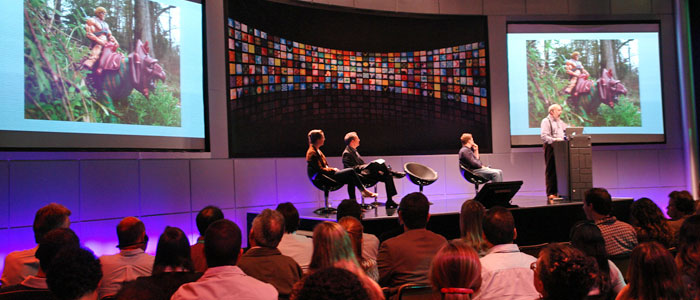

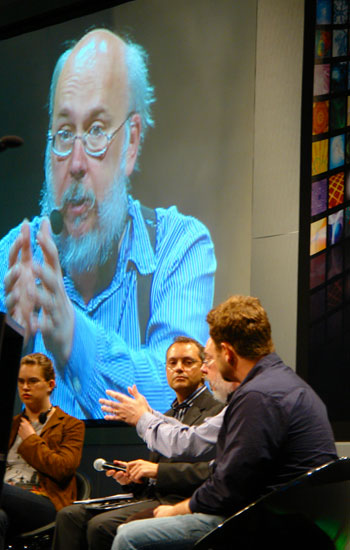
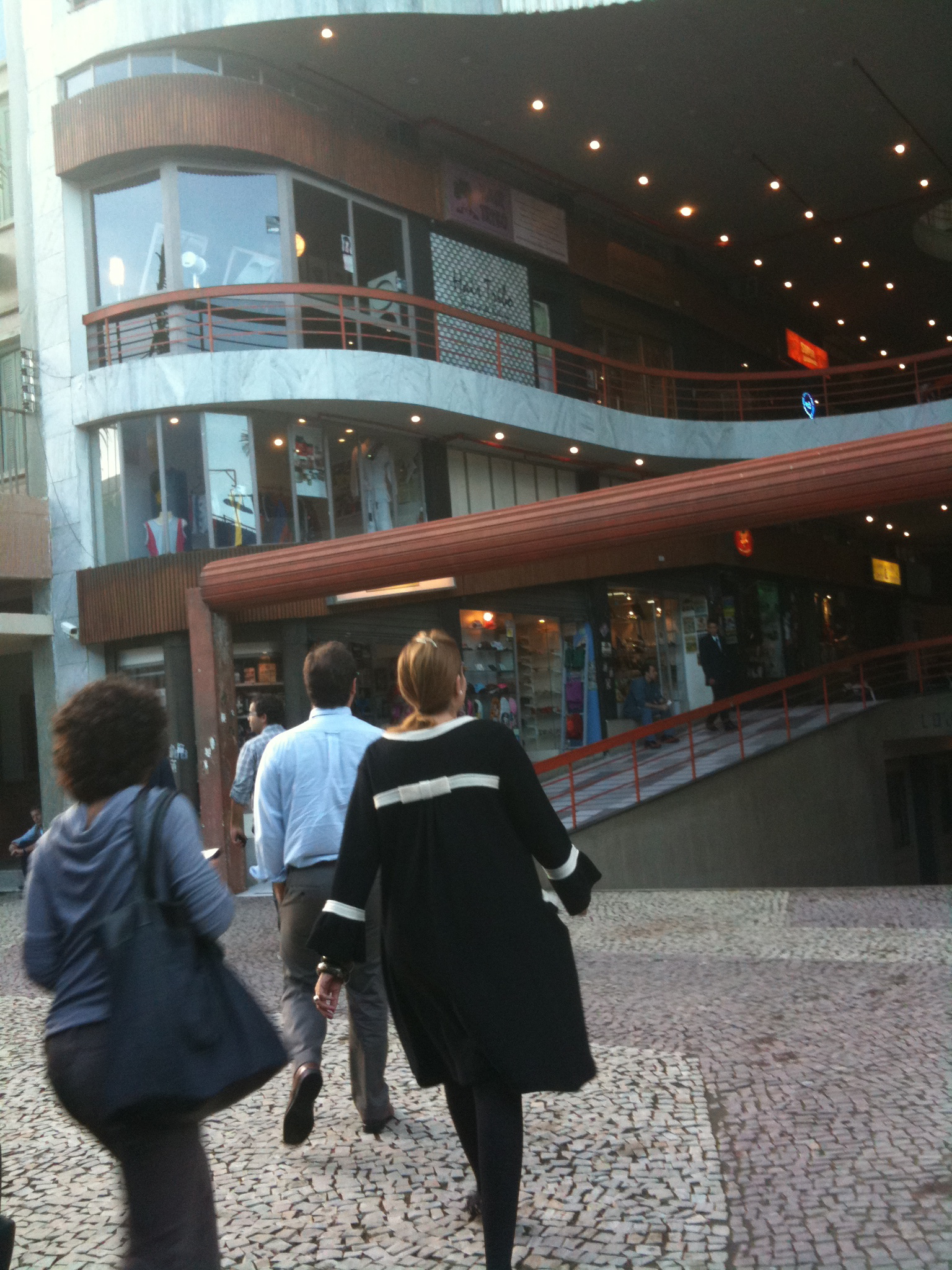
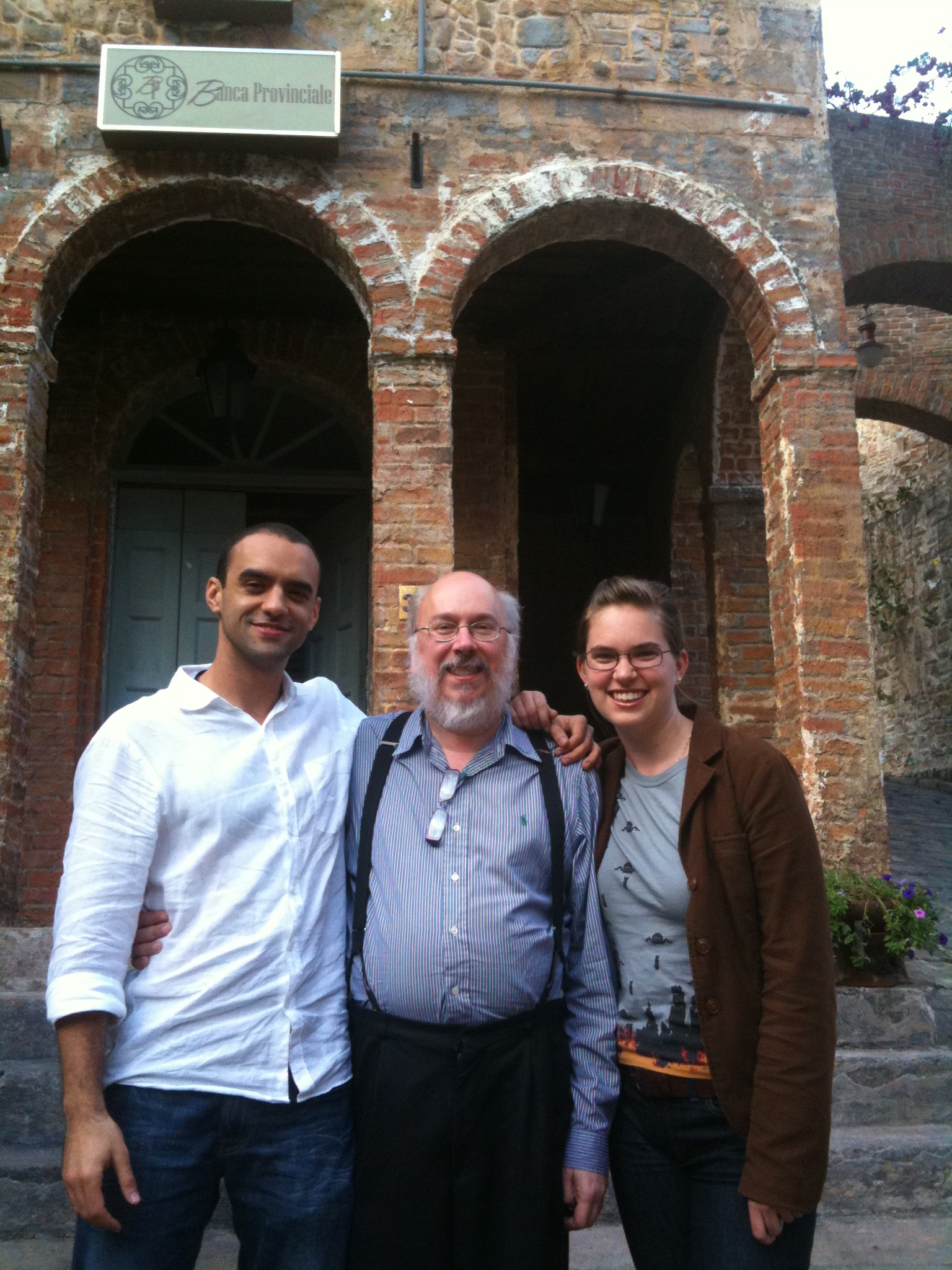
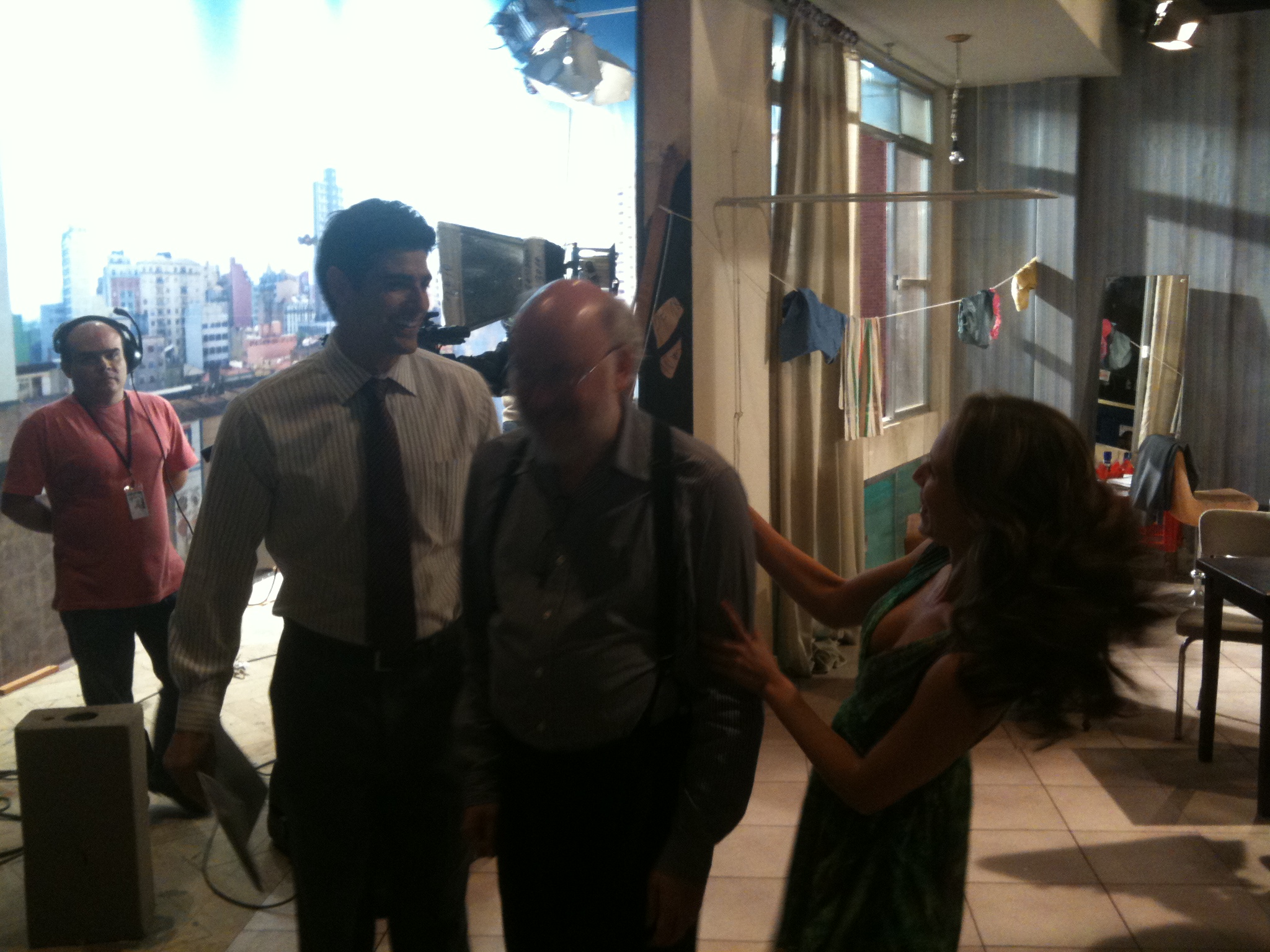
![Reblog this post [with Zemanta]](http://img.zemanta.com/reblog_e.png?x-id=f1b3a7b4-91f9-4e30-91f5-e6d92df9437b)
![Reblog this post [with Zemanta]](http://img.zemanta.com/reblog_e.png?x-id=109ac4a3-ec52-4124-b22b-1e772f3950af)
![Reblog this post [with Zemanta]](http://img.zemanta.com/reblog_e.png?x-id=c9d12056-4092-446c-8828-0bfa9beac86a)
![Reblog this post [with Zemanta]](http://img.zemanta.com/reblog_e.png?x-id=3a2cd20d-c2e4-4294-aa7e-9f5b6edf96d9)
![Reblog this post [with Zemanta]](http://img.zemanta.com/reblog_e.png?x-id=5991de4b-9093-40d1-8312-7ba5dd59b045)
![Reblog this post [with Zemanta]](http://img.zemanta.com/reblog_e.png?x-id=ffbee125-80c5-4d0d-8a51-3bd6cd3b2514)
![Reblog this post [with Zemanta]](http://img.zemanta.com/reblog_e.png?x-id=1a1ecca7-cede-4c4f-a48b-d9d0ae1e71a2)
![Reblog this post [with Zemanta]](http://img.zemanta.com/reblog_e.png?x-id=200fc9d0-d5b9-405d-b9da-5aa5d7a2dfd5)
![Reblog this post [with Zemanta]](http://img.zemanta.com/reblog_e.png?x-id=e9b393a2-102e-48b8-bb6b-bc38a5d4e2b0)
![Reblog this post [with Zemanta]](http://img.zemanta.com/reblog_e.png?x-id=e3038901-49a5-4647-98fc-a7e6255949ea)

























